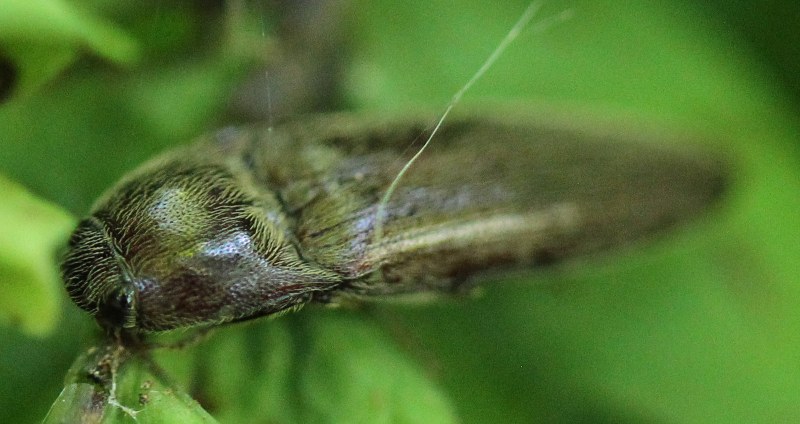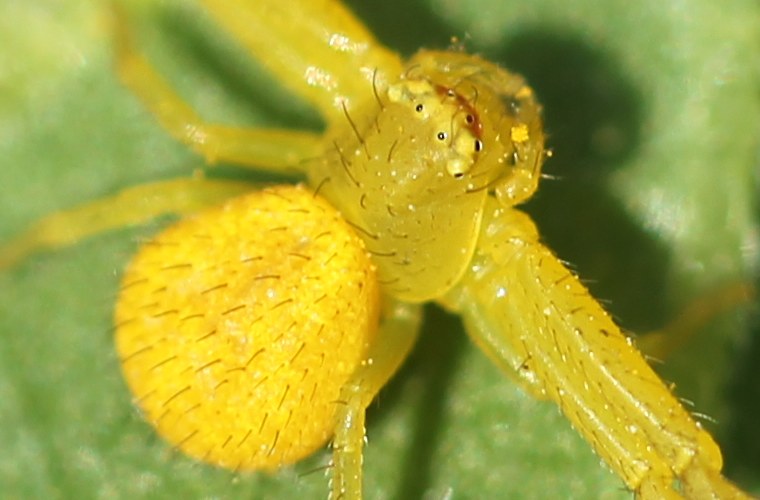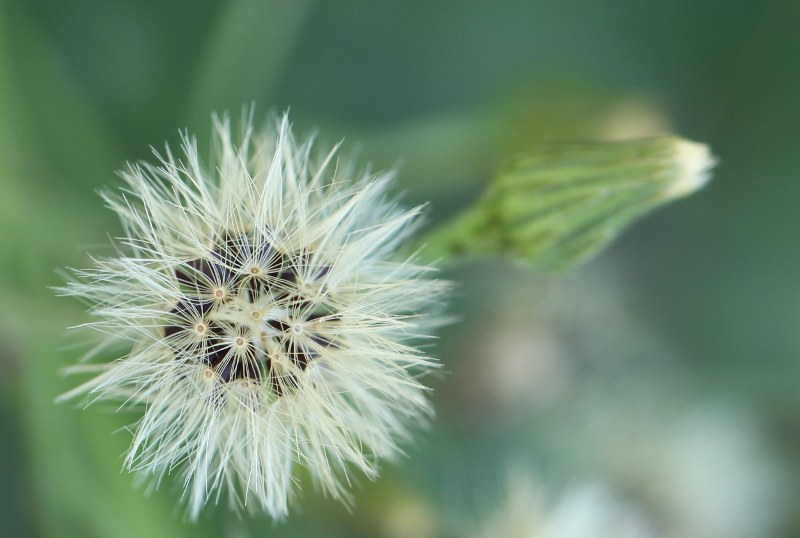As I left the Arboretum’s visitor center on Sunday, I noticed a crowd gathered around a shrub. It took me a second to see the shockingly large Chinese mantid (Tenodera aridifolia) that was the subject of everyone’s attention.

This praying mantis was larger than my hand. It had landed on someone’s leg and she had the peace of mind to place it on the shrub, where it stood still for many minutes.
The Chinese mantid is the largest of our praying mantises. Introduced from China in 1896 to control pests, they eat both harmful and beneficial insects, and sometimes each other. They are so large that they are able to attack hummingbirds.
Take a look at this face. It means business.

I found what I think is a click beetle in some foliage, shiny black with little white hairs all over it. It did not move and may have been caught in the web visible in the photo below.

I saw a fly with a sickly gray thorax. John Carr on BugGuide narrowed it to the Muscidae, a family that includes the familiar house fly.

The cup plant had past its blooming period, but another member of the sunflower family continued to unfurl its bright yellow flowers. Jerusalem artichoke (Helianthus tuberosus) is a native sunflower that forms edible tubers in its root system.

As I approached the flower, a yellow spider scurried away onto the stem. John and Jane Balaban on BugGuide have identified this spider as belonging to the genus Mecaphesa.

Solid yellow except for red patches on some of its legs, this spider blended in very well with the sunflower. Crab spiders are so named because of the way that they hold their front two legs. Rather than build webs, they ambush prey.
Upon closer inspection, this spider has some red underneath its eyes as well, and dark hairs throughout.

Panicled hawkweed (Hieracium paniculatum) was also in bloom. This smaller, dandelion-like flower comes in panicles (hence the name). It can be distinguished from the other hawkweeds by a lack of basal leaves.

Many of its numerous flowerheads had already gone to seed.

Two interesting creatures were hiding in a panicled hawkweed plant. The first was a cross orbweaver (Araneus diadematus), a spider with a beautiful pattern on its abdomen. Along with a white cross-shaped pattern and white dots, this large orange and brown spider has a dark center with a wavy white margin. It was huddled under a hawkweed leaf near a web that it had constructed. Introduced from western and northern Europe, it is also known as the European garden spider.

The second was a pink and black bug hanging onto one of the seed heads. This turns out to be a twice-stabbed stink bug (Cosmopepla lintneriana). Many of these bugs are red where you now see pink, hence the “twice-stabbed” moniker, referring to the two pink/red spots on its back.

A European paper wasp (Polistes dominula) landed on a nearby leaf long enough for me to photograph it. Unlike other paper wasps, it has mostly orange antennae. I made my acquaintance with this insect this spring when it entered my room through a gap in the window sill.

Finally, I saw a harvestman aka daddy long-legs on a fern. This one had a different pattern from the others I have seen this year.
